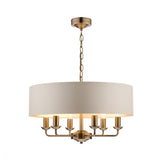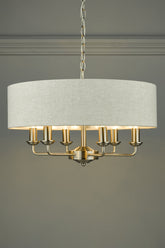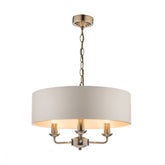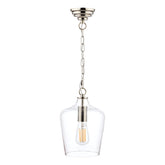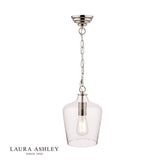The Impact of Lighting on your Health & Wellbeing
Lighting in your home can have a significant impact on your health and well-being in various ways.
The Light Company’s lighting expert, Judy Davison explains some of these key effects as follows:
- Mood and Emotions: The quality and intensity of light can influence your mood and emotions. Exposure to bright, natural light can boost serotonin levels, which can help improve feelings of happiness and reduce symptoms of depression. Conversely, poor lighting or lack of natural light may contribute to feelings of sadness and lethargy.
- Circadian Rhythms: The body's internal clock, known as the circadian rhythm, is largely influenced by light exposure. Bright and blue-enriched light in the morning helps regulate your sleep-wake cycle, making it easier to wake up and feel alert during the day. On the other hand, exposure to bright or blue light at night, especially from electronic devices, can disrupt sleep patterns and lead to insomnia.
- Sleep Quality: Proper lighting, especially in the evening, is crucial for maintaining good sleep hygiene. Dimming lights and avoiding blue light exposure at least an hour before bedtime can improve the quality of your sleep and help you fall asleep more easily.
- Eye Health: Inadequate or harsh lighting can strain your eyes and lead to discomfort, headaches, and eye fatigue. Proper lighting, such as using task lighting for reading or working on the computer, can reduce eye strain and improve overall eye health.
- Productivity and Focus: Bright and well-distributed lighting in work areas can enhance productivity and focus. Insufficient or poor lighting may lead to decreased concentration and performance.
- Physical Health: Exposure to natural light has been linked to various physical health benefits, such as increased vitamin D synthesis, improved immune function, and better overall well-being.
- Aging Eyes: As people age, their eyes become more sensitive to glare and require more light for visibility. Adequate lighting, especially in areas like staircases and hallways, can reduce the risk of falls and accidents in older adults.
- Mental Health: There is growing evidence that exposure to natural light and access to outdoor views can positively affect mental health, reducing stress, anxiety, and even symptoms of certain mental health disorders.
Optimising Lighting for Your Health & Well Being
To optimise lighting in your home, you should make the most of natural light during the day by opening curtains and blinds. You should also spend time outdoors regularly to benefit from sunlight exposure.
It’s equally important to use appropriate lighting levels for different activities, such as bright lighting for tasks and softer, dimmed lighting for relaxation.
Consider the colour temperature of your lighting. Cooler white light (bluish) is more stimulating, while warmer light (yellowish) is more relaxing. Adjust the colour temperature based on the time of day and your activities. Implement lighting control systems, like dimmer lights, or smart bulbs to adjust lighting levels and colour temperature according to meet your different needs throughout the day.
In summary, thoughtful consideration of lighting choices in your home can have a substantial impact on your overall health and well-being, affecting your mood, sleep, productivity, and more.
Lighting for those with Poor Vision
For individuals with poor vision, it's essential to have in place appropriate lighting to enhance visibility and reduce eyestrain. Here are some recommendations for the best lighting for people with poor vision:
- Ensure that all areas are well-lit with bright, even lighting. Use higher wattage bulbs or multiple light sources to eliminate shadows and dark spots.
- Choose daylight or full-spectrum bulbs, which mimic natural sunlight. These bulbs provide better colour rendering and can make it easier to distinguish between different objects and colours.
- Minimise glare by using fixtures with diffusers or shades that direct light downward and away from the eyes. Glare can be particularly troublesome for people with poor vision.
- Use task lighting for specific activities, such as reading or crafting. Adjustable desk lamps with focused lighting can make tasks more manageable for individuals with poor vision.
- Use contrasting colours for furniture, walls, and floors to make objects stand out more clearly.
- People with poor vision may be more sensitive to flickering or rapidly changing lights. Choose lighting that provides a stable and consistent illumination.
- Consider installing motion-activated lights in hallways, staircases, and other frequently used areas to provide immediate illumination when needed.
Individual needs can vary, so it's crucial to involve the person with poor vision in the decision-making process to identify what lighting setup works best for them.
The Light Company
At the Light Company we stock a huge range of lighting solutions for any scenario designed to enhance your home and to ensure you have the best lighting options to promote your health and well being. You can see our full range of leading brands on our website here https://thelightcompany.co.uk/
